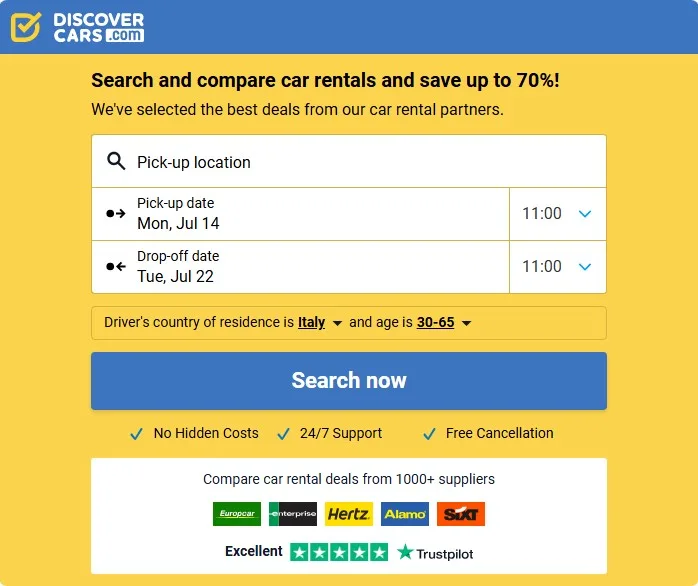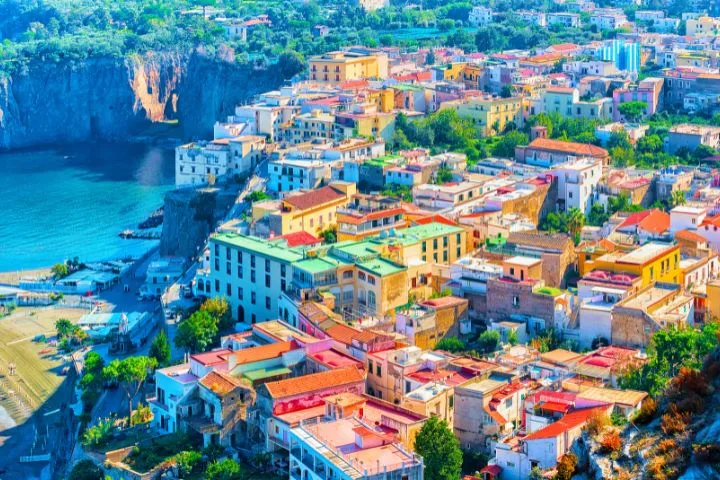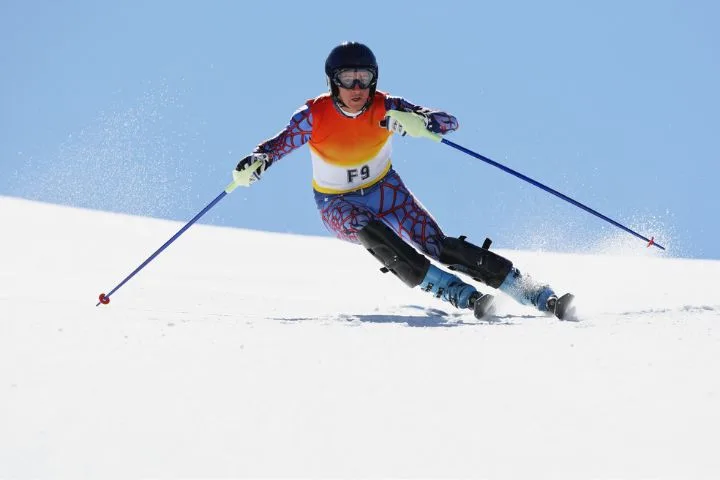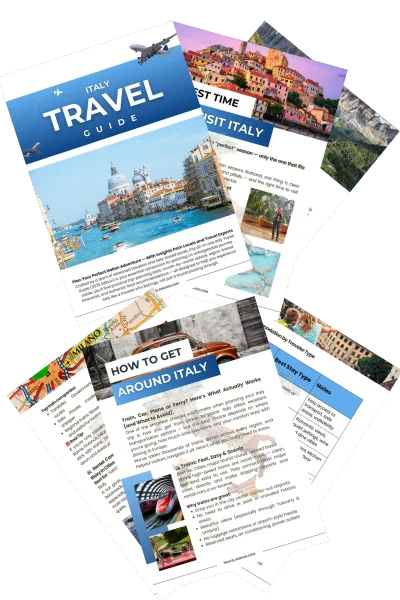How to Drive Italian Mountain Passes in Winter: Safety Tips, Gear & Scenic Routes

by Tim | Last Updated December 17, 2025
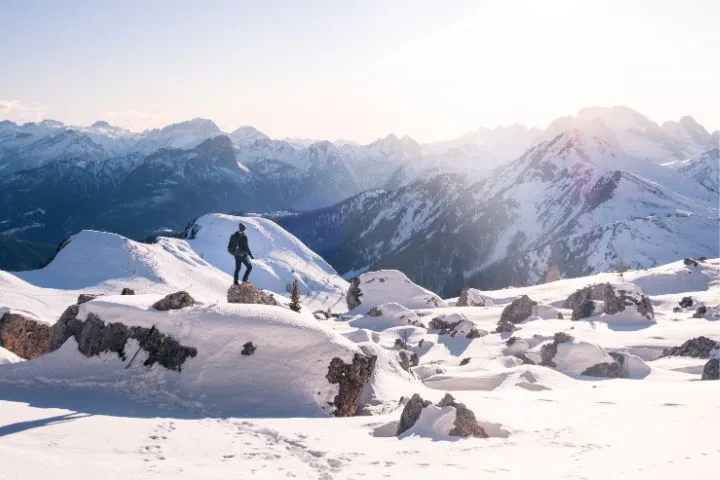
Driving Italian mountain passes in winter transforms already spectacular Alpine scenery into otherworldly landscapes of snow-covered peaks, frozen waterfalls, and pristine valleys that showcase the Italian Alps’ magnificence —but this breathtaking journey demands preparation, skill, and respect for rapidly changing conditions.
Having navigated Italian Alpine passes through multiple winter seasons over the past years – from routine cross-border trips to dedicated winter photography expeditions – I’ve experienced everything from perfect powder snow conditions with crystal-clear visibility to whiteout blizzards that made me question the wisdom of mountain driving altogether.
And yet, for those willing to plan ahead and respect the road, driving the mountain passes of Italy in winter is one of the most rewarding road trip experiences in Europe. Whether you’re chasing ski slopes near Cortina d’Ampezzo, exploring remote Dolomite villages dusted with snow, or simply craving the solitude of high-altitude landscapes, this guide on how to drive Italian mountain passes in winter will walk you through everything you need — from car prep and safety tips to recommended routes and winter accommodation strategies.
Essential Winter Driving Gear and Equipment
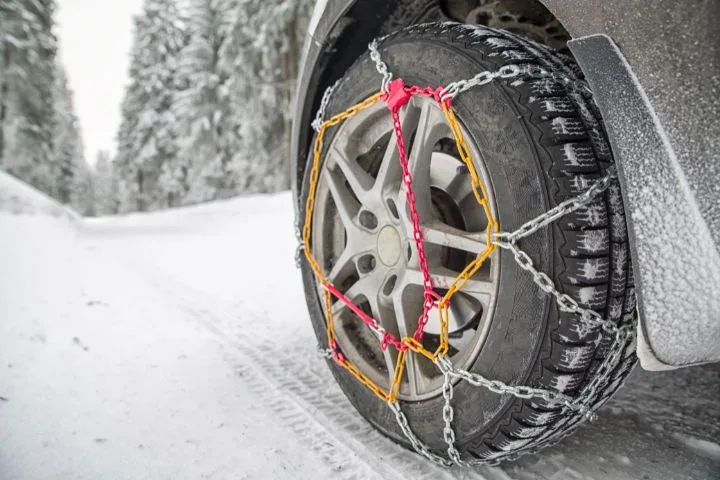
Snow chains represent absolutely critical equipment for Italian mountain pass driving, with different types serving various conditions and vehicle requirements. Having used everything from basic cable chains to premium diamond-pattern chains, I can tell you that quality makes the difference between confident driving and nerve-racking tension on icy switchbacks.
Snow chain selection and sizing require precise measurement of your tire dimensions, as improper fit can damage wheels or fail during critical moments. I learned this lesson the expensive way when undersized chains on a rental car snapped during my ascent of Passo di Gavia, leaving me stranded until mountain rescue assistance arrived with replacement equipment.
During that memorable breakdown, a local Italian driver stopped and spent two hours helping me install borrowed chains properly, teaching me techniques I still use today, and demonstrating the mountain community solidarity that exists among Alpine drivers.
Winter tire advantages over all-season alternatives become dramatically apparent on steep mountain grades where traction means the difference between controlled descent and sliding disaster. My switch to dedicated winter tires after several scary encounters transformed mountain driving from stressful survival into confident navigation.
Emergency equipment essentials include thermal blankets, high-energy food, water, flashlights, and battery-powered phone chargers that can sustain you during unexpected overnight stays when passes close due to weather conditions.
I keep a comprehensive emergency kit after spending an unexpected night in my car when Brenner Pass closed due to avalanche risk – the experience taught me that comfort items like warm clothing and hot beverages can transform potential disasters into memorable adventures.
Vehicle preparation requirements extend beyond tires and chains to include antifreeze testing, battery condition assessment, windshield washer fluid designed for sub-zero temperatures, and heating system functionality that becomes life-saving in extreme conditions.
Winter driving equipment essentials:
- Premium snow chains properly sized for your specific tires
- Dedicated winter tires providing superior traction on ice and snow
- Emergency supplies including food, water, blankets, and communication devices
- Vehicle winterization including antifreeze, battery testing, and heating system checks
- Navigation tools with offline maps and real-time weather monitoring capabilities
For a full overview of Italian road rules, speed limits, signage, and essential tips for tourists, don’t miss our Ultimate Guide to Driving in Italy.
Mandatory Gear for Alpine Winter Roads
Snow chains, winter tires, visibility kits, and emergency equipment are often legally required.
- Start with Italy’s full winter driving rules & expectations → Driving in Italy: Complete Guide
- Understand national winter equipment requirements → Winter Driving in Italy: Complete Guide
Italian Winter Driving Regulations and Requirements
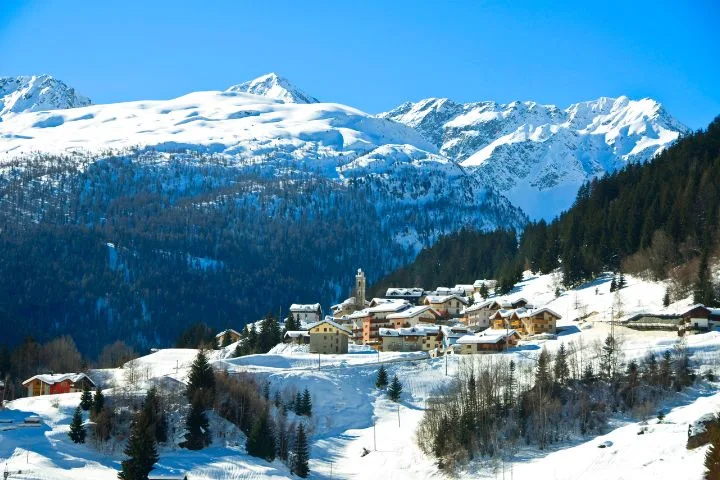
Legal requirements for winter equipment vary by region and elevation throughout Italy, with mandatory snow chain carrying periods typically running from October 15 to April 15 on mountain roads, though specific dates and requirements can vary between provinces and individual pass routes.
Snow chain installation zones are clearly marked with blue circular signs featuring tire and chain symbols, indicating areas where chains must be carried and installed when conditions require—failure to comply results in substantial fines and potential liability for accidents caused by inadequate equipment.
During a winter crossing of Passo dello Spluga, I watched Italian police conduct roadside equipment checks, turning back vehicles without proper chains and issuing significant fines to drivers who attempted to continue with inadequate preparation.
Speed limit modifications during winter conditions often reduce normal limits by 20-30 km/h on mountain passes, with variable electronic signs providing real-time speed recommendations based on current weather and road conditions.
Insurance considerations for winter mountain driving should include comprehensive coverage for weather-related incidents, chain damage to wheels or vehicle body, and potential extended stays due to road closures that can affect accommodation and travel schedule costs.
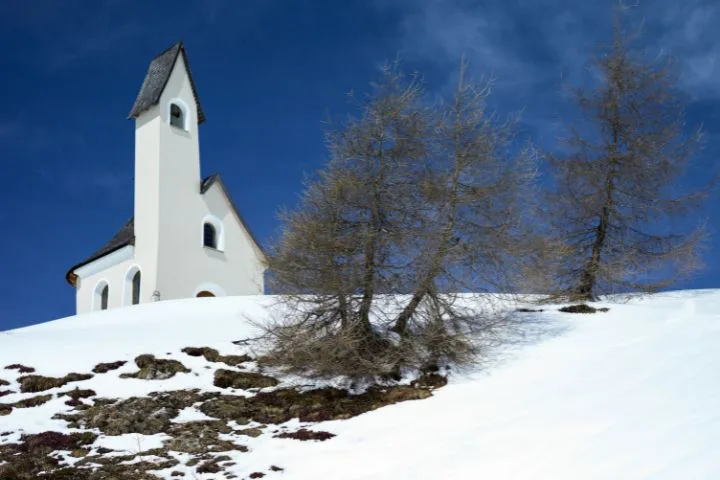
I discovered the importance of comprehensive coverage when a chain installation on icy pavement scratched my rental car’s paint – the damage wasn’t covered by basic rental insurance, resulting in unexpected repair costs that exceeded my security deposit.
Cross-border documentation for Alpine travel requires proper vehicle registration, international insurance coverage, and understanding of neighboring countries’ winter equipment requirements that may exceed Italian standards.
Italian winter regulation highlights:
- Mandatory snow chain carrying from October 15 to April 15 on mountain routes
- Installation is required when blue chain signs indicate the necessity
- Reduced speed limits during winter conditions with variable electronic signage
- Comprehensive insurance coverage is essential for weather-related incidents
- Cross-border travel requires understanding of international winter equipment standards
📜 Legal Rules for Mountain Driving in Winter
Different regions enforce winter regulations at different times.
- Review required documents, insurance & compliance rules → Car Insurance Requirements in Italy
- Know how winter road signs indicate mandatory equipment → Italian Road Signs Explained
Weather Planning and Route Assessment

Italian meteorological services provide specialized mountain weather forecasting through MeteoAM (Italian Air Force Weather Service) and regional services that offer detailed Alpine forecasts, including visibility, precipitation, wind conditions, and avalanche risk assessments.
Alpine weather pattern understanding becomes crucial because conditions can change dramatically within short time periods and elevations, with clear skies at valley level transforming into blizzard conditions at pass heights within the same hour.
My most dramatic weather lesson occurred when starting a clear morning drive up Stelvio Pass, only to encounter a sudden storm system that reduced visibility to zero within 20 minutes – teaching me to monitor weather continuously rather than relying on departure conditions.
Road condition monitoring through ANAS (Italian road authority) provides real-time updates on pass accessibility, chain requirements, and temporary closures that can save hours of dangerous driving or extended delays at closed barriers.
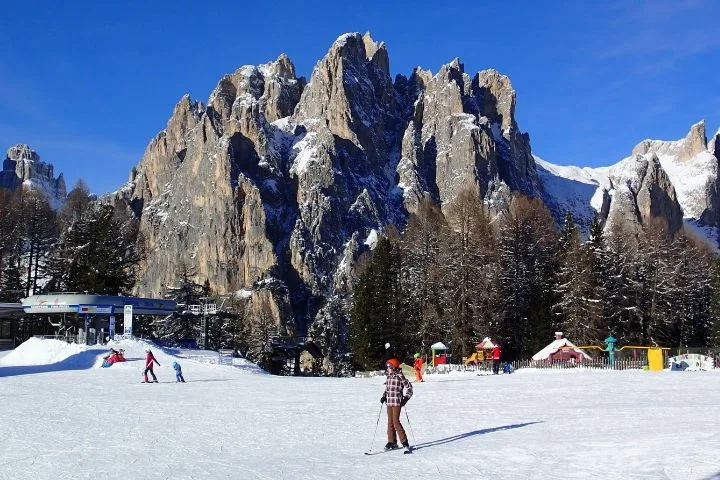
Timing strategies for optimal weather windows often favor early morning departures before afternoon storm systems develop, though this requires balancing daylight availability with weather stability for safe navigation of technical mountain sections.
During one memorable Great St. Bernard crossing, I departed at 6 AM under clear skies and completed the pass before noon storm clouds arrived – timing that proved essential when the route closed completely that afternoon due to visibility conditions.
Backup route planning must account for alternative passes, tunnel options, and even train transport when primary routes become impassable, as Italian Alpine weather can close multiple routes simultaneously during severe weather events.
Weather planning strategies:
- Monitor specialized mountain weather services providing detailed Alpine forecasts
- Understand rapid weather change potential with elevation and microclimate variations
- Use real-time road condition monitoring for current pass accessibility
- Time departures for optimal weather windows, typically early morning
- Develop comprehensive backup plans, including alternative routes and transportation
🌨️ Checking Conditions Before Crossing a Pass
Weather can change rapidly in the Alps and Apennines.
- Use apps that show closures, snow conditions & live traffic → Best Navigation Apps for Italy Road Trips
- Pair weather checks with smart route planning → Driving in Italy: Routes & Planning Tips
Major Italian Mountain Passes – Winter Accessibility
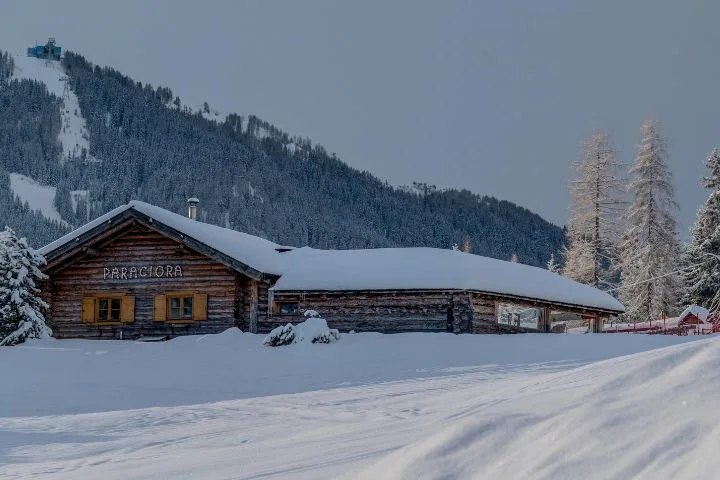
Stelvio Pass represents Europe’s highest paved mountain pass at 2,757 meters elevation, featuring 48 hairpin turns and spectacular engineering that becomes extremely challenging during winter conditions when snow and ice create dangerous driving situations.
The pass typically closes to normal traffic from November to May, though exact dates depend on weather conditions and snow accumulation that can vary significantly between seasons and even within individual winter months.
Brenner Pass provides the most reliable winter access between Italy and Austria, with excellent infrastructure, regular maintenance, and comprehensive services that make this route ideal for winter Alpine crossing, though traffic volume can create congestion during peak travel periods.
My preferred route for winter Austria-Italy travel has always been Brenner due to its reliability – even during severe weather events, this pass typically remains accessible when other routes close completely.
Great St. Bernard Pass offers historic significance but challenging winter conditions, with the tunnel providing a reliable alternative access when surface conditions become impassable for normal vehicles without specialized equipment and expert driving skills.
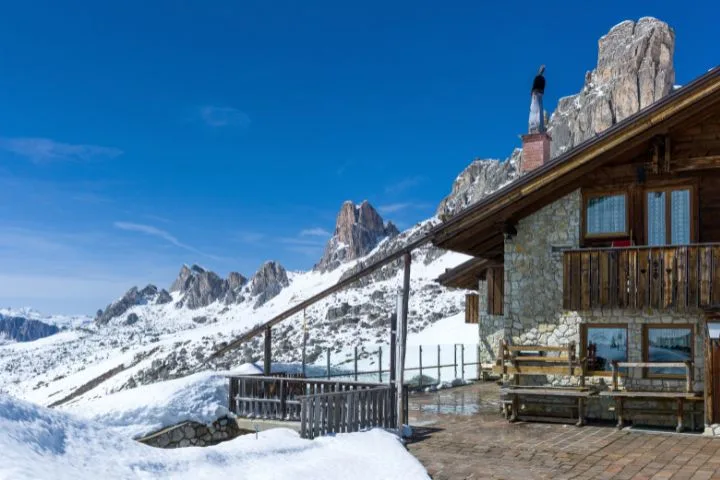
Gavia and Mortirolo Passes demand expert-level skills during optimal conditions and close completely during winter months, making these routes unsuitable for casual winter drivers but spectacular for experienced Alpine enthusiasts during brief accessible periods.
During one October attempt at Gavia Pass, I encountered early-season snow that forced retreat despite proper equipment – these passes demand respect and realistic assessment of both conditions and personal skill levels.
Lesser-known passes like Passo di Resia or Passo dello Spluga offer spectacular scenery with fewer crowds but require careful research regarding winter accessibility and local conditions that may not receive the same maintenance priority as major routes.
Mountain pass winter access guide:
- Stelvio Pass: highest elevation, typically closed November-May
- Brenner Pass: most reliable winter access with excellent infrastructure
- Great St. Bernard Pass: historic route with tunnel alternative for winter access
- Gavia/Mortirolo Passes: expert-only routes with extended winter closures
- Research lesser-known passes for specific winter accessibility and maintenance schedules
🗺️ Which Passes Stay Open in Winter
Stelvio, Brenner, Great St. Bernard, and Apennine crossings.
- Learn how regional winter conditions vary across Italy → Best Places to Visit in Italy by Car This Winter
- Understand speed limits and restrictions on alpine highways → Speed Limits in Italy for Tourists
Winter Driving Techniques for Mountain Conditions
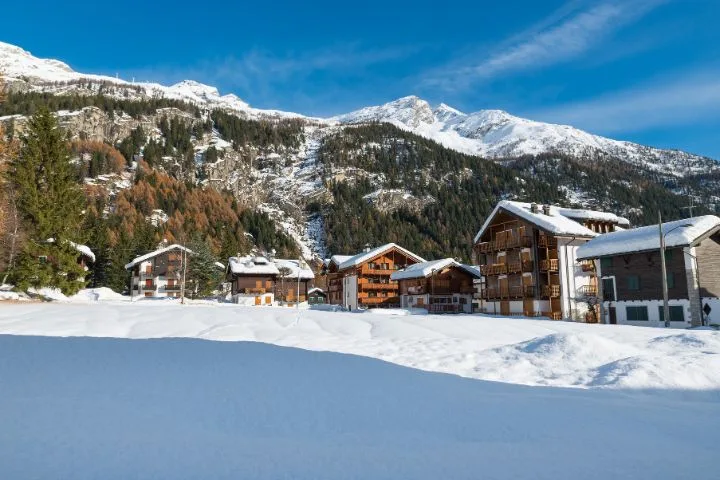
Traction management on snow and ice requires understanding weight distribution, acceleration control, and steering inputs that maintain vehicle control when normal driving techniques become inadequate for mountain conditions.
Gentle acceleration techniques prevent wheel spin that can leave vehicles stuck or sliding, with smooth throttle application and understanding of your vehicle’s traction limits becoming essential skills for maintaining forward momentum on steep mountain grades.
During my early winter driving experiences on Italian passes, I made the mistake of applying normal acceleration techniques on icy switchbacks – the resulting wheel spin and loss of control taught me the importance of delicate throttle modulation and patience.
Braking strategies for steep mountain descents require understanding engine braking, proper following distances, and gentle pedal application that prevents wheel lockup and maintains steering control during emergency situations.
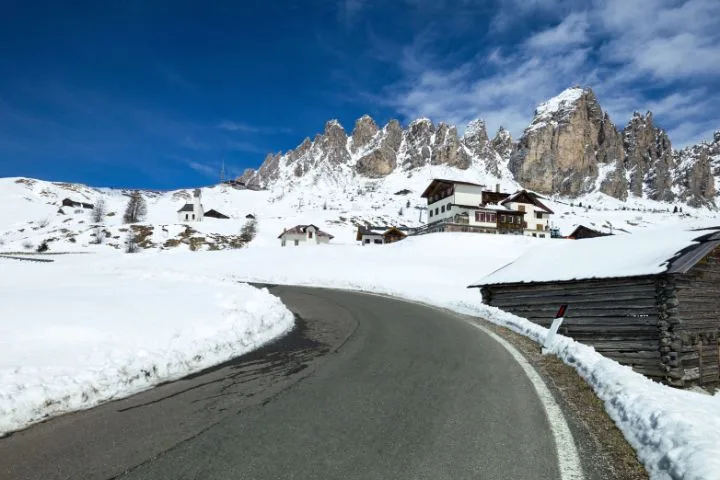
Cornering techniques for switchback mountain roads demand understanding of weight transfer, steering smoothness, and speed reduction that allows vehicles to navigate tight turns safely when road surfaces provide minimal traction.
My most valuable cornering lesson came from an experienced Italian mountain driver who taught me to complete all braking before entering curves, then maintain steady throttle through the turn – a technique that transformed my confidence on icy switchbacks.
Visibility management during snow, fog, and whiteout conditions requires proper lighting use, following distance adjustment, and sometimes complete stops when conditions exceed safe driving limits, regardless of schedule pressures or destination urgency.
Emergency vehicle recovery techniques for stuck situations include understanding momentum use, digging strategies, and traction aid deployment that can free vehicles without requiring professional assistance or potentially dangerous recovery attempts.
Mountain driving technique essentials:
- Gentle acceleration preventing wheel spin and maintaining forward momentum
- Engine braking and controlled descent techniques for steep mountain grades
- Smooth cornering with pre-turn braking and steady throttle through curves
- Visibility management, including proper lighting and safe following distances
- Emergency recovery techniques for stuck vehicles and traction loss situations
Plan Your Trip with Our Favorite Booking Tools
Safety Protocols and Emergency Preparedness
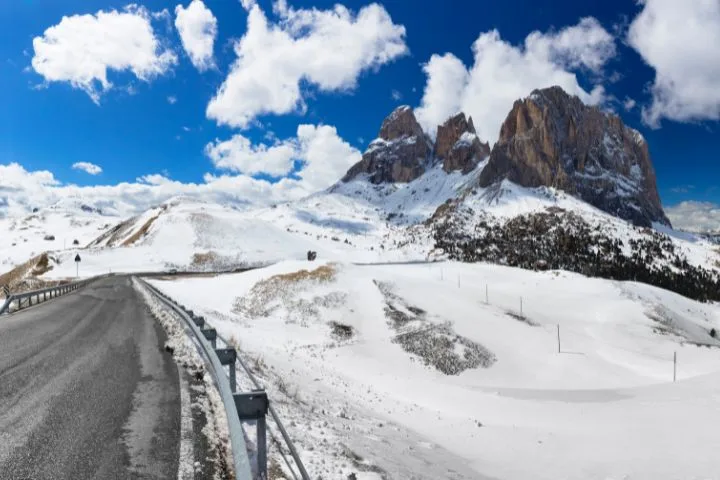
Pre-departure safety checks should include comprehensive vehicle inspection, weather monitoring, route condition assessment, and communication planning that ensures someone knows your intended route and expected arrival time.
Emergency supply recommendations extend beyond basic car kits to include multi-day survival supplies when mountain weather can strand travelers for extended periods in remote locations with limited rescue access.
My comprehensive emergency kit evolved after several close calls, now including sleeping bags rated for Alpine conditions, emergency food for multiple days, water purification tablets, and satellite communication devices that work when cellular coverage fails.
Vehicle breakdown procedures in mountain conditions require understanding of safe positioning, hazard marking, and assistance summoning that protects both stranded drivers and other traffic navigating challenging road conditions.
Avalanche awareness for mountain pass drivers includes understanding risk indicators, safe travel timing, and emergency procedures when avalanche conditions threaten route safety or require immediate evacuation from danger zones.
Communication protocols with emergency services require understanding Italian emergency numbers (112), location description techniques for mountain areas, and language basics that ensure effective communication during crisis situations.
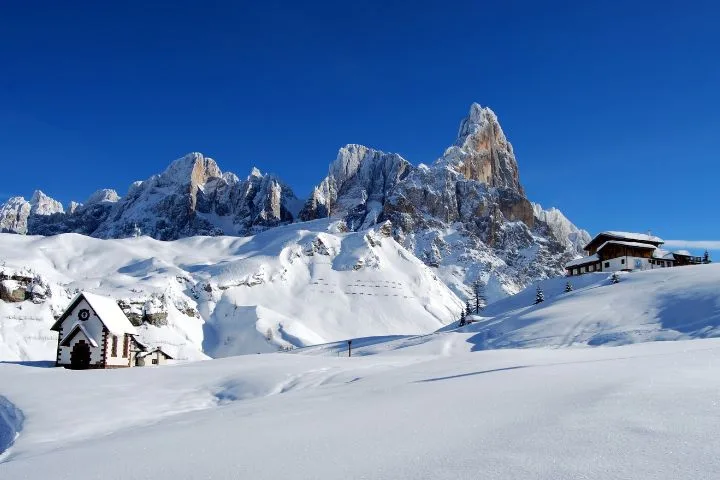
Emergency contact information should include Italian emergency services, insurance provider international numbers, vehicle assistance programs, and local mountain rescue organizations that specialize in Alpine conditions and terrain.
Safety and emergency preparation:
- Comprehensive pre-departure checks including weather, vehicle, and route conditions
- Multi-day emergency supplies suitable for extended mountain survival
- Understanding of breakdown procedures and safe vehicle positioning
- Avalanche awareness and recognition of dangerous conditions
- Effective communication planning including emergency contacts and language basics
Best Scenic Winter Routes and Photography Opportunities

Stelvio National Park winter landscapes provide spectacular photography opportunities with snow-covered peaks, frozen waterfalls, and pristine Alpine meadows that showcase Italian mountain beauty at its most dramatic and pristine.
Dolomites winter access routes through passes like Sella and Gardena offer accessible winter driving with spectacular limestone peak photography, traditional mountain villages, and cultural experiences that combine natural beauty with authentic Alpine heritage.
My favorite Dolomites winter photography occurred during a perfect powder snow morning when sunrise illuminated the distinctive limestone spires – the contrast between golden peaks and blue shadows created images that captured the magic of Italian Alpine winter.
Val d’Aosta Alpine valleys provide access to traditional mountain culture, medieval castles, and spectacular Mont Blanc views that combine cultural exploration with natural beauty photography in pristine winter settings.
South Tyrol winter villages showcase a unique German-Italian cultural blend with traditional architecture, winter markets, and Alpine cuisine that provide authentic cultural experiences alongside spectacular mountain scenery.
Photography timing considerations favor early morning and late afternoon lighting that enhances snow texture and mountain definition, though winter’s shorter days require efficient planning and sometimes compromise between optimal light and safe travel timing.
During winter photography expeditions in the Italian Alps, I’ve learned to balance optimal lighting conditions with safe travel windows – sometimes the most spectacular light occurs when mountain conditions become dangerous for driving.
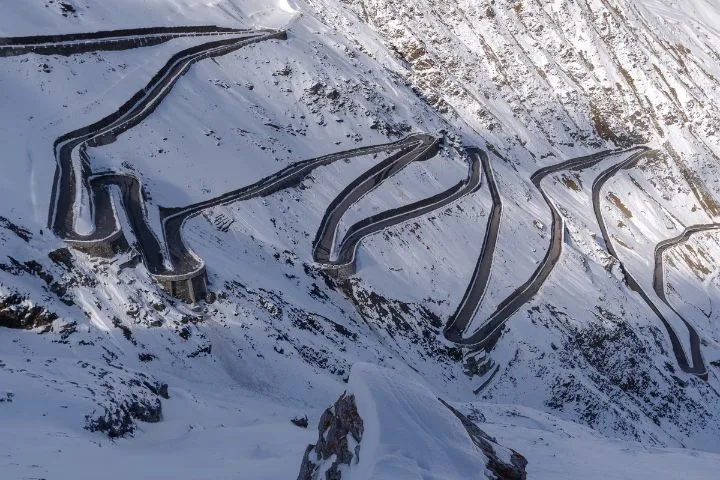
Equipment protection in mountain conditions requires an understanding of condensation management, battery performance in cold temperatures, and protective gear that maintains camera functionality during extreme weather conditions.
Winter scenic route highlights:
- Stelvio National Park offering pristine Alpine landscapes and winter wildlife
- Dolomites accessible winter routes with distinctive limestone peak photography
- Val d’Aosta traditional mountain culture and Mont Blanc viewpoints
- South Tyrol cultural blend villages with authentic Alpine winter experiences
- Photography timing balancing optimal light with safe travel conditions
Accommodation and Services Along Winter Routes
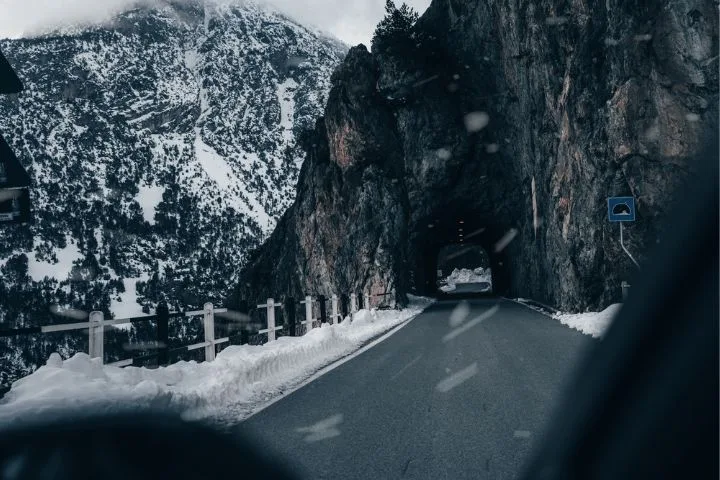
Mountain hotels and refuges along major passes provide essential services including secure heated parking, equipment drying facilities, local weather updates, and often rescue coordination when conditions deteriorate beyond safe travel limits.
Service station availability becomes critical during winter when many rural facilities close seasonally, requiring fuel planning that accounts for reduced operating hours and potential emergency supply needs for extended weather delays.
My most concerning fuel situation occurred during a winter storm when multiple service stations were closed, teaching me to maintain fuller tanks during mountain winter driving and identify backup fuel sources along planned routes.
Ski resort accommodations often provide excellent winter mountain access with reliable services, equipment rental possibilities, and local expertise that can enhance both safety and enjoyment of winter mountain experiences.
Traditional Alpine villages offer authentic cultural experiences with family-run accommodations, traditional cuisine, and local knowledge about mountain conditions that commercial facilities cannot provide.
During a winter stay in a traditional Val d’Aosta village, the family innkeeper provided detailed local weather forecasts, route recommendations, and even lent emergency equipment – hospitality that transformed a challenging travel situation into a memorable cultural exchange.
Booking strategies for winter mountain travel should account for seasonal closures, weather-dependent cancellation policies, and backup accommodation options when primary plans become impossible due to road conditions.
Winter accommodation considerations:
- Mountain hotels offering heated parking and equipment drying facilities
- Service station planning accounting for seasonal closures and reduced hours
- Ski resort accommodations providing reliable services and mountain access
- Traditional village stays offering authentic culture and local mountain knowledge
- Flexible booking strategies accommodating weather-dependent travel changes
Best Hotels Near Italian Mountain Passes for Winter Driving Adventures
Planning to drive Italy’s snow-covered passes this winter? These top-rated hotels and chalets offer parking, easy mountain access, and cozy comfort—perfect for drivers exploring the Dolomites, Alps, and beyond.
Here are some top-rated stays you can book directly via Hotels.com— all ideal for winter road trippers:
❄️ 1. Hotel de la Poste – Cortina d’Ampezzo
A historic 4-star hotel in the heart of Cortina with secure parking, cozy alpine charm, and close proximity to Passo Falzarego and other key routes in the Dolomites.
👉 Check availability on Hotels.com
❄️ 2. Hotel Laurin – Canazei
Perfectly placed in Val di Fassa near the Sella Pass, this boutique mountain hotel offers spa access, ski storage, and easy access to top Dolomite driving routes.
👉 Check prices and book
❄️ 3. Grand Hotel Savoia – Cortina d’Ampezzo
One of the Dolomites’ most luxurious winter bases, this 5-star property offers valet parking, a sauna, and exceptional comfort just minutes from major passes.
👉 View rooms and offers
💡 Pro Tip: Always confirm parking availability and snow accessibility with the property, especially if you’re planning to arrive during or after a snowstorm.
🏨 Planning Stops Along Alpine Roads
Fuel stations, winter hotels, roadside services, and rest areas.
- Understand fuel availability in mountain regions → Fuel Prices and Gas Stations in Italy
- Choose winter-ready rental cars → Best Car Rental Companies in Italy for Foreigners
Cross-Border Considerations and International Travel
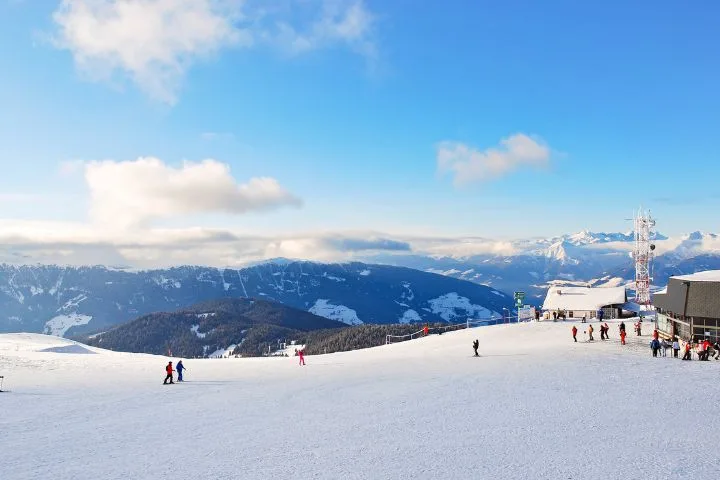
Austria border crossing procedures via Brenner Pass require understanding of Austrian winter driving requirements, vignette toll systems, and potential equipment standards that exceed Italian minimums for mountain driving.
Swiss border requirements through Great St. Bernard Pass include vignette purchases, understanding of Swiss winter equipment standards, and currency considerations for services and emergency assistance in different Alpine regions.
French border crossings via Mont Blanc Tunnel or other Alpine routes require understanding of French winter driving regulations, toll systems, and potential equipment requirements that may differ from Italian standards.
My first multi-country winter Alpine crossing taught me the importance of researching each country’s specific requirements – discovering Swiss chain requirements differed from Italian standards, while already en route, created unnecessary complications and expense.
International insurance coverage must include comprehensive protection across multiple countries, understanding of claim procedures in different systems, and emergency assistance coverage that works effectively in all planned destinations.
Currency and language preparation for multi-country Alpine travel includes an understanding of different payment systems, basic emergency phrases in relevant languages, and backup communication methods when language barriers complicate emergency situations.
Emergency assistance variations between countries require understanding of different emergency numbers, assistance procedures, and coverage limitations that may affect rescue or repair services during international mountain travel.
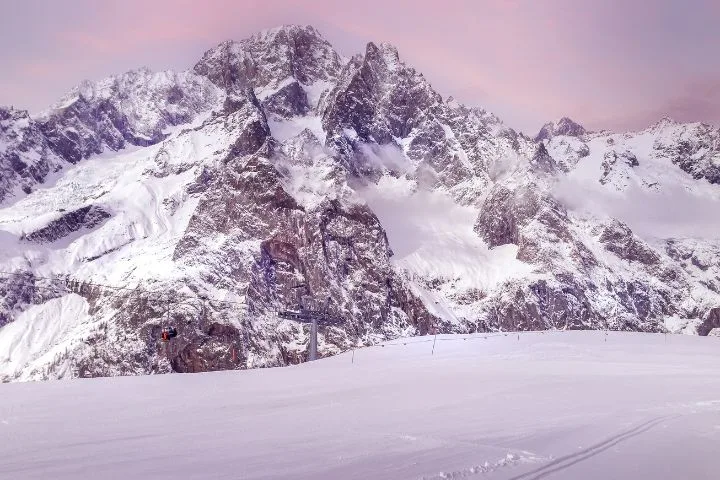
Cross-border travel essentials:
- Research winter driving requirements for each country along planned routes
- Understand vignette, toll, and payment systems for international Alpine travel
- Comprehensive international insurance coverage, including emergency assistance
- Currency and language preparation for effective emergency communication
- Emergency contact information specific to each country’s assistance systems
🌍 Driving Between Italy, Austria, Switzerland & France
Rules can change suddenly across borders.
- Review documentation required for international driving → International Driving Permit Italy Guide
- Understand toll systems and alpine highways → Italy Toll Roads & Telepass Explained
Alternative Transportation and Backup Plans
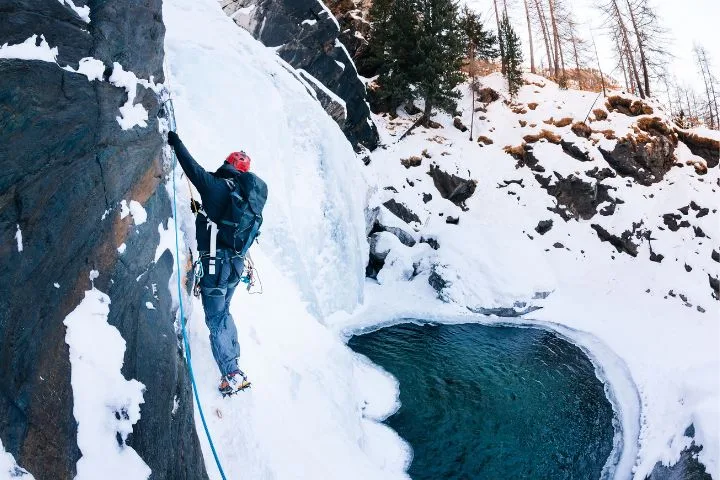
Train connections through Alpine tunnels provide reliable winter transportation when driving conditions become impassable, with car transport services available on some routes that combine driving flexibility with weather-independent travel options.
Bus services connect major Alpine towns with winter schedules that account for seasonal conditions, providing backup transportation when personal vehicle travel becomes impossible due to weather or mechanical issues.
Car transport services through major tunnel systems like Mont Blanc or Great St. Bernard allow vehicles to cross Alpine barriers during severe weather when surface pass driving becomes too dangerous for normal traffic.
My most valuable backup plan experience occurred when Great St. Bernard Pass closed due to avalanche risk – the tunnel car transport service allowed continuation of my planned itinerary without major disruption or dangerous driving attempts.
Organized winter mountain tours provide professional drivers, proper equipment, and safety expertise that can deliver mountain experiences when individual driving skills or equipment prove inadequate for specific conditions.
Weather-dependent flexibility in itinerary planning allows adaptation to changing conditions without compromising safety or forcing dangerous driving decisions when original plans become inadvisable.
Combining transportation methods creates comprehensive travel strategies that maximize both flexibility and safety, using personal vehicles for accessible portions while employing professional services for challenging segments.
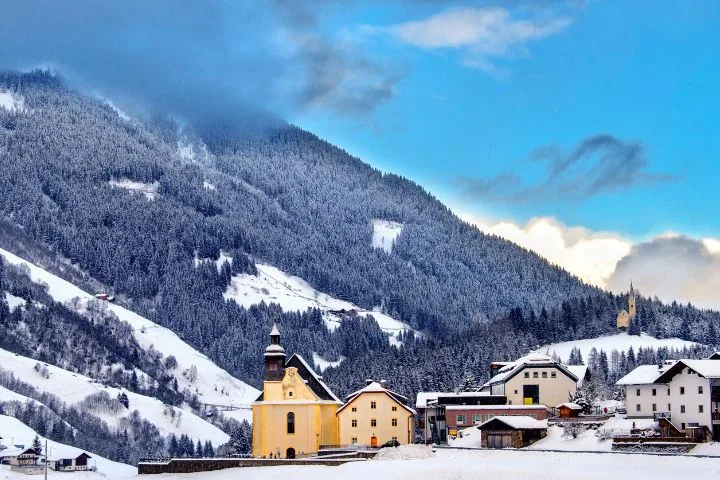
Alternative transportation strategies:
- Train connections providing a reliable Alpine crossing during severe weather
- Professional car transport services for major tunnel systems
- Organized tours offering expert drivers and proper safety equipment
- Flexible itinerary planning accommodating weather-dependent changes
- Combined transportation approaches maximizing both safety and accessibility
Plan Your Trip with Our Favorite Booking Tools
Your Italian Alpine Winter Adventure
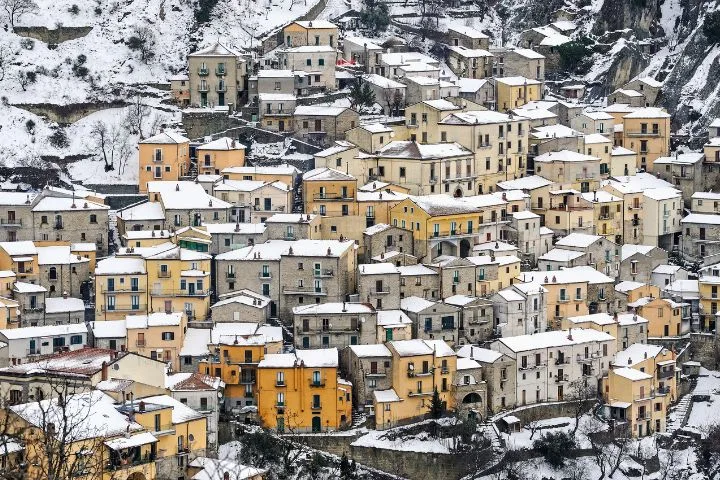
Successfully driving Italian mountain passes in winter requires comprehensive preparation, proper equipment, and respect for Alpine conditions that can transform beautiful scenic routes into challenging survival situations without warning.
The combination of spectacular winter scenery, authentic mountain culture, and the satisfaction of mastering challenging driving conditions creates unforgettable experiences for properly prepared travelers who understand both the rewards and risks of winter Alpine adventures.
My years of winter mountain pass driving in Italy have taught me that success depends equally on technical preparation and mental readiness – having the right equipment means nothing without the judgment to use it appropriately and the wisdom to retreat when conditions exceed safe limits.
The rewards, however, justify the challenges: pristine Alpine landscapes, authentic mountain communities, and the deep satisfaction of navigating some of Europe’s most spectacular and demanding roads during their most beautiful and challenging season.
Master the essentials, respect the mountains, and prepare for winter driving adventures that reveal why Italian Alpine passes rank among Europe’s most spectacular and challenging seasonal driving experiences!
🏁 Final Checklist for Mountain Pass Driving
Preparation is the key to a safe and unforgettable winter journey.
- Master Italy’s winter driving rules → Winter Driving in Italy
- Keep the full driving guide handy → Driving in Italy: Master Guide
🚗❄️ FAQs: Driving Italian Mountain Passes in Winter
Do I need snow chains or winter tires to drive mountain roads in Italy?
Yes. Between November 15 and April 15, most mountainous regions in Italy legally require winter tires or snow chains in the vehicle — even if roads appear clear. Fines can apply if you’re stopped without proper gear.
Are Italian mountain passes open in winter?
Some are open year-round, while others close due to snow and avalanche risk. Popular passes like Passo dello Stelvio or Passo Gavia often close in winter. Always check official road updates before departure.
Is it safe to drive through the Alps or Dolomites in winter?
Yes — if you’re well-prepared. Many roads are well-maintained and plowed frequently, but fog, snow, and ice can appear suddenly. Always use caution, reduce speed, and carry chains even if you have winter tires.
What kind of vehicle is best for mountain driving in Italy during winter?
A compact SUV or AWD vehicle with winter tires is ideal for navigating snowy or steep terrain. Avoid underpowered compact cars unless you’re sticking to flatter regions.
Can I rent a car equipped for winter mountain driving in Italy?
Yes, but you must request winter tires or chains in advance. Some rental companies charge extra, and not all vehicles are winter-ready by default — especially in southern Italy.
💬 We’d love to hear from you!
Have questions, tips, or personal travel stories to share? Drop them in the comments below — your insights help fellow travelers plan their adventures too.


